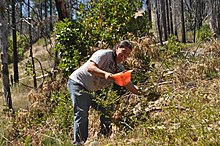
The Klamath people are a Native American tribe of the Plateau culture area in Southern Oregon and Northern California. Today Klamath people are enrolled in the federally recognized tribes:
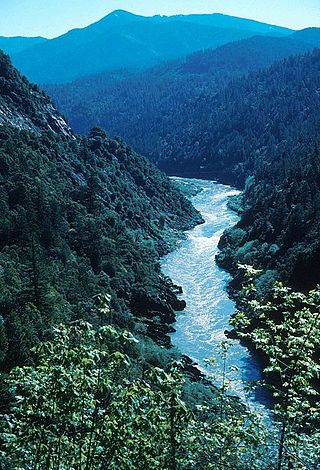
The Klamath River flows 257 miles (414 km) through Oregon and northern California in the United States, emptying into the Pacific Ocean. By average discharge, the Klamath is the second largest river in California after the Sacramento River. Its nearly 16,000-square-mile (41,000 km2) watershed stretches from the high desert of south-central Oregon to the temperate rainforest of the North Coast. Unlike most rivers, the Klamath begins in a desert region and flows through the rugged Cascade Range and Klamath Mountains before reaching the ocean; National Geographic magazine has called the Klamath "a river upside down".

Achomawi are the northerly nine bands of the Pit River tribe of Palaihnihan Native Americans who live in what is now northeastern California in the United States. These 5 autonomous bands of the Pit River Indians historically spoke slightly different dialects of one common language, and the other two bands spoke dialects of a related language, called Atsugewi. The name "Achomawi" means river people and properly applies to the band which historically inhabited the Fall River Valley and the Pit River from the south end of Big Valley Mountains, westerly to Pit River Falls. The nine bands of Achumawi lived on both sides of the Pit River from its origin at Goose Lake to Montgomery Creek, and the two bands of Atsugewi lived south of the Pit River on creeks tributary to it in the Hat Creek valley and Dixie Valley.
The Atsugewi are Native Americans residing in northeastern California, United States. Their traditional lands are near Mount Shasta, specifically the Pit River drainage on Burney, Hat, and Dixie Valley or Horse Creeks. They are closely related to the Achomawi and consisted of two groups. The Atsugé traditionally are from the Hat Creek area, and the Apwaruge are from the Dixie Valley. They lived to the south of the Achomawi.

The Maidu are a Native American people of northern California. They reside in the central Sierra Nevada, in the watershed area of the Feather and American Rivers and in Humbug Valley. In Maiduan languages, maidu means "man".
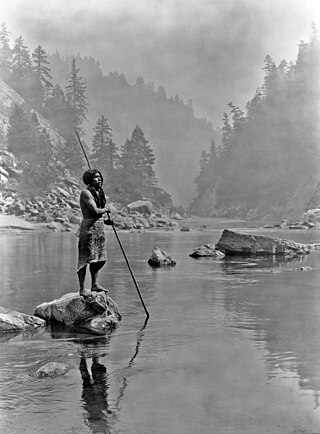
Hupa are a Native American people of the Athabaskan-speaking ethnolinguistic group in northwestern California. Their endonym is Natinixwe, also spelled Natinook-wa, meaning "People of the Place Where the Trails Return". The Karuk name was Kishákeevar / Kishakeevra. The majority of the tribe is enrolled in the federally recognized Hoopa Valley Tribe.

Karuk or Karok is the traditional language of the Karuk people in the region surrounding the Klamath River, in Northwestern California. The name ‘Karuk’ is derived from the Karuk word káruk, meaning “upriver”.
The Shastan peoples are a group of linguistically related Indigenous peoples from the Klamath Mountains. They traditionally inhabited portions of several regional waterways, including the Klamath, Salmon, Sacramento and McCloud rivers. Shastan lands presently form portions of the Siskiyou, Klamath and Jackson counties. Scholars have generally divided the Shastan peoples into four languages, although arguments in favor of more or fewer existing have been made. Speakers of Shasta proper-Kahosadi, Konomihu, Okwanuchu, and Tlohomtah’hello "New River" Shasta resided in settlements typically near a water source. Their villages often had only either one or two families. Larger villages had more families and additional buildings used by the community.
The Nomlaki are a Wintun people native to the area of the Sacramento Valley, extending westward to the Coast Range in Northern California. Today some Nomlaki people are enrolled in the federally recognized tribes: Round Valley Indian Tribes, Grindstone Indian Rancheria or the Paskenta Band of Nomlaki Indians. The Nomlaki were bordered by the Wintu (Wintun) in the north, the Yana in the northeast and east, the Konkow (Maiduan) in the east, the Patwin (Wintun) in the south, and the Yuki in the west.

The Patwin are a band of Wintun people in Northern California. The Patwin comprise the southern branch of the Wintun group, native inhabitants of California since approximately 500.
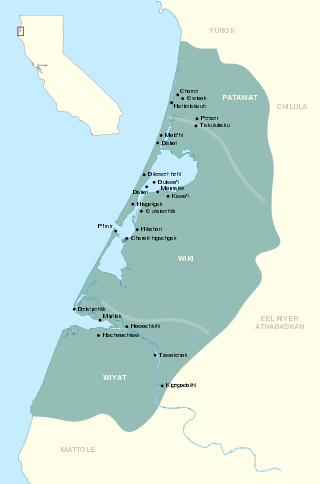
The Wiyot are an indigenous people of California living near Humboldt Bay, California and a small surrounding area. They are culturally similar to the Yurok people. They called themselves simply Ku'wil, meaning "the People". Today, there are approximately 450 Wiyot people. They are enrolled in several federally recognized tribes, such as the Wiyot Tribe, Bear River Band of the Rohnerville Rancheria, Blue Lake Rancheria, and the Cher-Ae Heights Indian Community of the Trinidad Rancheria.
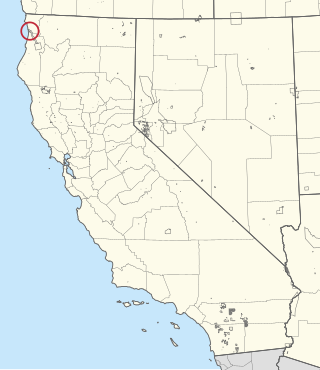
The Resighini Rancheria, located just south of Klamath, California, is a federally recognized tribe of Yurok people.
The Tolowa people or Taa-laa-wa Dee-ni’ are a Native American people of the Athabaskan-speaking ethno-linguistic group. Two rancherías still reside in their traditional territory in northwestern California. Those removed to the Siletz Reservation in Oregon are located there.

The Yurok Indian Reservation is a Native American reservation for the Yurok people located in parts of Del Norte and Humboldt counties, California, on a 44-mile (71 km) stretch of the Klamath River. It is one of a very few tribes who have never been removed from their ancestral lands in California.

The Yurok are an Indigenous people from along the Klamath River and Pacific coast, whose homelands are located in present-day California stretching from Trinidad in the south to Crescent City in the north.

Stephen Powers (1840–1904) was an American journalist, ethnographer, and historian of Native American tribes in California. He traveled extensively to study and learn about their cultures, and wrote notable accounts of them. His articles were first published over a series of years in the Overland Monthly journal, but collected in The Tribes of California (1877) published by the US Geological Survey.
Karuk traditional narratives include myths, legends, tales, and oral histories preserved by the Karuk (Karok) people of the Klamath River basin of northwestern California.
Yurok traditional narratives include myths, legends, tales, and oral histories preserved by the Yurok people of the lower Klamath River in northwestern California.
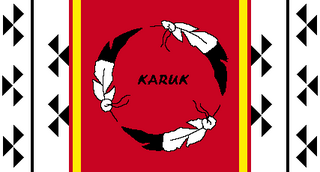
The Karuk Tribe is a federally recognized Indian tribe of Karuk people. They are an indigenous people of California, located in the northwestern corner of the state, in Humboldt and Siskiyou counties. The Karuk Tribe is one of the largest Indian tribes in California.
The Cher-Ae Heights Indian Community of the Trinidad Rancheria is a federally recognized tribe with members who are descendants of Chetco, Hupa, Karuk, Tolowa, Wiyot, and Yurok people in Humboldt County, California. As of the 2010 Census the population was 132.
